

The Evergreen Sugi of Japan
|
Cherry blossoms in spring, hydrangeas in summer, red maple leaves in autumn, and camellias in winter. No matter the season, there are no shortages of beautiful plants to admire in Japan. However, there is an evergreen tree that, despite not being flashy or bright, is a mainstay in the Japanese landscape and is used widely in daily life. This plant is the sugi, which is also known as the Japanese cedar in English. Sugi trees are endemic to Japan and can be seen throughout the country. They can be found growing naturally in forests, and are also planted by people in temples, shrines, as well as residential areas.
Some of the most well-known sugi in Japan can be found on Yakushima Island, in Kagoshima Prefecture. Yakushima Island (屋久島) is a small island off Kyushu, and is covered by lush vegetation. It is home to the Yakushima National Park, which is home to many ancient sugi trees known as yakusugi (屋久杉). To be precise, the term ‘yakusugi’ refers to sugi that have lived more than a thousand years. Sugi in other parts of Japan are estimated to live around 800 years, but due to the rainy environment of the island and its nutritionally-poor soil, sugi on Yakushima grow incredibly slowly and are resistant to rotting. By adapting, many of the island’s trees are able to grow for thousands of years, thus creating lush forest scenery of yakusugi that many have now come to find distinctive of Yakushima. The largest of these yakusugi is known as the Jomon Sugi (縄文杉), with various sources estimating the age of the tree to possibly be between 2,600 and 7,000 years old. The discovery of the tree in 1968 was what prompted authorities to put more effort into protecting the tree and the primary forests on the island. These efforts have resulted in the island being designated as a UNESCO World Heritage site in 1993. Besides the Jomon Sugi, there are several other famous yakusugi that can be found on the island, especially in the Shiratani Unsuikyo Ravine. The ravine has a network of hiking trails that allows visitors to safely enjoy the scenery of the island and observe its yakusugi. These include the Yayoi Sugi and the Daio Sugi (its name literally means ‘Great King Sugi’); both trees are estimated to be around 3,000 years old. There are also many other forest trails on other parts of the island on which visitors can observe younger yakusugi, other large trees, and tree stumps. Some trails date back to the Edo Period, so visitors can not only walk the same paths that people did hundreds of years ago, but also see traces of where they did research and checks on trees in the past. The awe-inspiring and historic trees of Yakushima is just one of many natural charms that can be found in Kagoshima Prefecture. In cooperation with Kagoshima City, JCC will be introducing more facts about the prefecture’s cuisine and crafts, so do follow us on our Facebook page to learn more! |
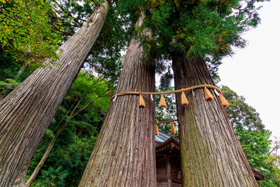 © photoAC 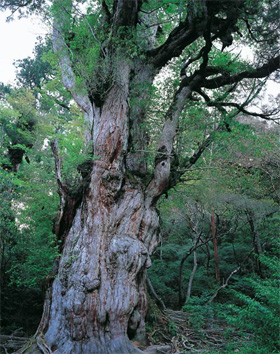 © Ishibashi Mutsumi 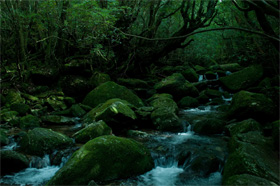 © pakutaso 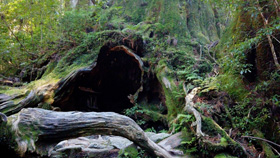 © photoAC |
|
The properties of sugi lumber also makes it an excellent wood to use for various purposes. Sugi is light and pliable, yet extremely durable. Japanese people are attracted not only to its practical characteristics, such as its resistance to rot and its ability to conduct and insulate heat well, but also its aesthetic properties, such as its pleasant fragrance and colour. It has long been regarded as luxurious wood and has been used in many traditional buildings like palaces, shrines, and temples. Not a single part of a tree goes to waste, as its leaves can also be used to make incense.
Sugi is also closely linked to the sake industry. Before glass bottles became commonplace, sake barrels made of sugi were thought to be the best way of packaging and shipping sake. Some varieties of sake even depend on barrels made specifically of sugi for its flavour; a brand of sake produced in Nara Prefecture ages its sake in barrels made of sugi to imbue it with the pleasant aroma of the sugi. Apart from barrels, sake brewers would also hang up decorations known as sugidama (杉玉) over the entrance of their buildings. These bright green balls of fresh sugi fronds are meant to symbolise to customers that freshly brewed sake was now available for sale. Recently, a joint research project spearheaded by the government and universities in Akita Prefecture have also come up with craft gin made with sugi. Research done as part of the project has found that inhaling the scent of sugi (specifically sugi from Akita) was able to increase the degree of relaxation in participants. Using this knowledge, they decided to create small batches of craft gin that could help bring comfort to consumers through its taste and aroma. Though it is a helpful plant, sugi trees can also be a source of headaches for much of the Japanese population. Many dread the coming of spring, when the trees start dispersing their pollen, as the pollen can cause hay fever. Those sensitive to pollen alleviate their symptoms with protective gear like masks, and wearing clothes made of material that prevent pollen from sticking to them. |
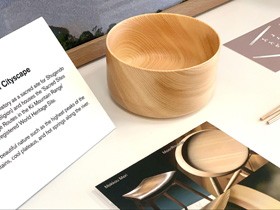 Sugi bowls from Zoom In! Nara © JCC 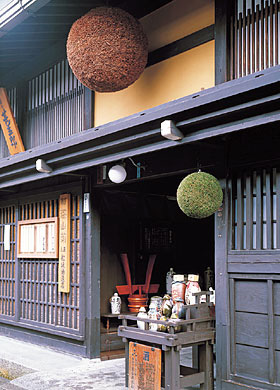 © Gorazd Vilhar, Hibi Sadao 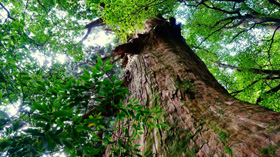 © photoAC |
| Despite the seasonal headaches it causes, sugi trees still continue to be prevalent in many parts of daily Japanese life. Its characteristics have made it useful, with every part of the tree divided for use in sectors such as construction, craft, and cuisine. The trees also cut imposing and impressive figures on the natural Japanese landscape. On your next trip to Japan, be sure to not give attention not only to colourful cherry and maple trees, but also to the unassuming but no-less-significant evergreen sugi. |
Resources
|
(2020, July 20). Craft gin with flavor of Akita cedar comforts the heart. The Asahi Shimbun. http://www.asahi.com/ajw/articles/13529368 |
|
Japan Creative Centre 4 Nassim Road, Singapore 258372 +65 6737 0434 / jcc@sn.mofa.go.jp https://www.sg.emb-japan.go.jp/JCC/ Nearest parking at Orchard Hotel & Delphi Orchard |
 |